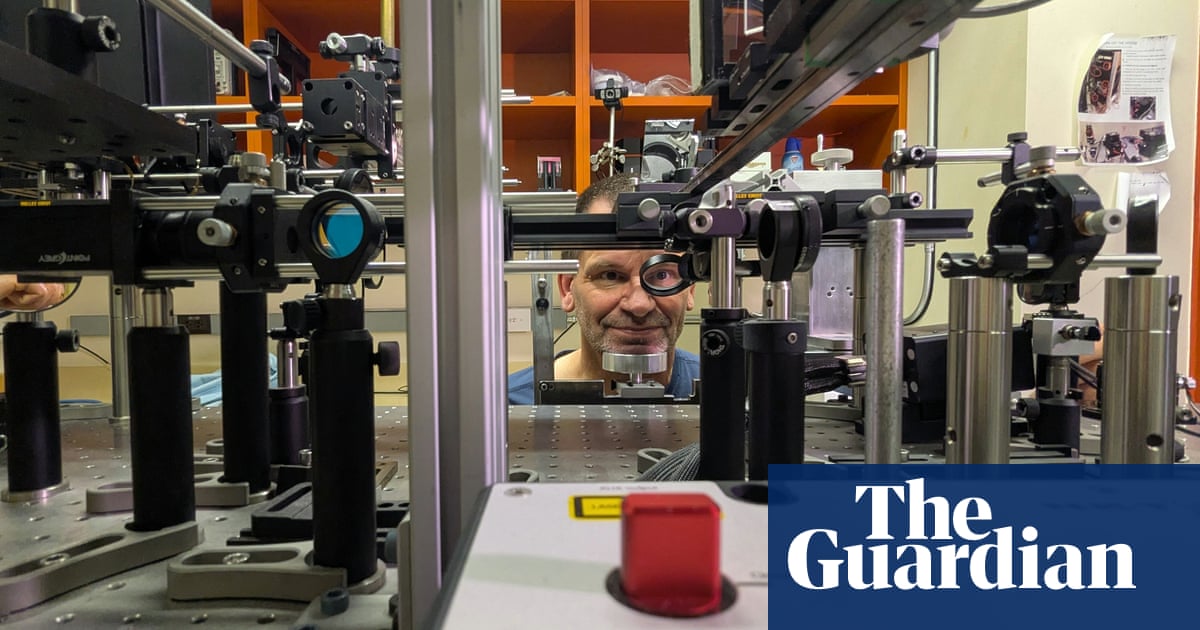Being an executioner is not the sort of job that gets posted in a local wanted ad. Kids don’t dream about being an executioner when they grow up, and people don’t go to school for it. So how does one become a death row executioner in the US, and who are the people doing it?
This was the question I couldn’t help but ask when I began a book project on lethal injection back in 2018. I’m a death penalty researcher, and I was trying to figure out why states are so breathtakingly bad at a procedure that we use on cats and dogs every day. Part of the riddle was who is performing these executions.
Seven years later – and with the Trump administration promising more executions to come – I have an answer, sort of.
We do not, and for the most part cannot, know precisely who is under the executioner’s hood. State secrecy statutes put the equivalent of a Harry Potter cloak of invisibility over these state-sanctioned killers. But litigation files and investigative journalism have revealed a number of executioners’ identities, allowing us to peek behind the veil of secrecy for a glimpse of who these people are.
Consider Missouri’s chief executioner from 1995-2006, Dr Alan Doerhoff, who was responsible for 54 of Missouri’s 65 executions between 1976 and 2006. He didn’t push the syringes – shockingly, non-medical prison guards did that – but he did most everything else. “Nobody will ever do as many [executions] as I have,” he would later boast.
Doerhoff’s identity was revealed when a lawyer for a condemned prisoner checked the prison’s chemical dispensary logs and discovered that 2.5 grams of sodium thiopental (the drug used to anesthetize the prisoner) had been used in previous executions. The state’s protocol called for 5 grams, double that amount. The prisoner sued.
State officials first told the court that the chemical dispensary logs were wrong. But the next day, they wrote again to “apologize to the court and the parties for providing incorrect information”. The logs were correct. The amount of sodium thiopental being injected was wrong.
Troubled by the finding, the court allowed the prisoner’s lawyers to conduct a limited deposition of the state’s chief executioner. The executioner stated under oath that he had problems mixing the drugs, “so right now we’re still improvising”. He also said that he “sometimes transpose[d] numbers”.

“I am dyslexic,” he explained. “So, it’s not unusual for me to make mistakes.” (Doerhoff later stated that he was not dyslexic, he just sometimes mixed up numbers.)
Missouri doubled down on its executioner, telling the court that it was confident in his competence and planned to continue to use him in future executions. But the court rejected the state’s assurances, writing that it was “gravely concerned that a physician who is solely responsible for correctly mixing the drugs which will be responsible for humanely ending the life of condemned inmates has a condition which causes him confusion with regard to numbers”.
The state appealed, but soon thereafter, investigative journalism discovered Doerhoff’s identity. Jeremy Kohler with the St Louis Post-Dispatch broke the story in January 2008, and with it came another shocking revelation: Doerhoff had been sued for medical malpractice more than 20 times, and his hospital privileges had been revoked at two hospitals. Doerhoff had also been publicly reprimanded by the state medical board for hiding his malpractice suits from the hospitals where he practiced.
All of this was known to the Missouri attorney general’s office when it assured the court of Doerhoff’s professional competence. After oral arguments, the state dropped its appeal of the ruling.
The following year, Missouri’s legislature passed a law stating: “A person may not knowingly disclose the identity of a current or former member of an execution team,” authorizing punitive damages for violations.
“Their answer to the public finding out they had an incompetent doctor was making it impossible to find out who the doctor is,” an ACLU spokesperson stated.
No longer able to serve as Missouri’s executioner, Doerhoff joined the staff of a local hair-removal business and served as an executioner for the federal government and at least one other state – Arizona.
Arizona knew about the trial court’s ruling in Missouri, and the facts behind it. But it hired Doerhoff anyway, and he conducted an execution for the state in 2007, just months after being barred from conducting executions in Missouri.
When attorneys found out about Doerhoff’s involvement, the prisoners next in line for execution in Arizona sued.
Arizona settled that suit in 2009, agreeing to a number of changes in its lethal injection protocol, including formal background and license checks of its executioners. But during the litigation, attorneys for the prisoners discovered that Doerhoff wasn’t the only executioner who had no business conducting executions.
One of Arizona’s three IV team executioners was medical team member #3, who was once a nurse but had his nursing license suspended. At the time of the litigation, his occupation was running an appliance business in another state. The identity of medical team member #3 is unknown, but the court noted that he had been arrested multiple times, “including three times in 10 days in Arizona for a DUI in 2007”.
Arizona pledged that with its new screening system in place, the court could be confident that the state would use only licensed medical personnel going forward.
But in 2011, Arizona was hauled back into federal court because it had not made good on its promise. The prison director admitted to conducting five executions with full knowledge that medical team member #4 did not hold a medical license of any kind. Nor did officials conduct the required criminal history check on him. If they had, they would have learned that medical team member #4 had been charged with DUI in 2008, public intoxication in 2000, and writing a bad check before that.
Medical team member #4 was a prison guard who had previously served as a medical corpsman in the military. He later stated that his only screening was a phone call from the warden “asking whether he knew how to start an IV and whether he would have a problem doing it for an execution”. He was not asked any other questions, and at the time, he had not placed an IV for 15 years. On paper, Arizona was dutifully screening its execution team members. But in reality, the state was doing nothing of the sort.

Missouri and Arizona are not the only states where discoveries about executioners have raised serious questions about the care and competence with which executioners are chosen. In 2006, a federal court struck down California’s lethal injection protocol based in part on the “inconsistent and unreliable screening of execution team members”.
The execution team member responsible for the custody of lethal injection drugs had been disciplined for smuggling drugs into San Quentin before joining the execution team; two team members had been arrested for drunk driving; one suffered from depression and PTSD; and one had been out on a two-month medical leave from getting into a fight with a prisoner.
The court in California also noted the “extremely troubling” disappearance of sodium thiopental that was ostensibly taken from the prison pharmacy for training purposes but never used and never returned. “These circumstances may warrant investigation by an appropriate law-enforcement agency,” the court wrote. In California, the state’s executioners were also the chief suspects in a potential criminal investigation.
The federal government has proven no better than states on this score. Not only did the federal government hire Doerhoff after he was banned from serving as Missouri’s executioner, but it also hired a nurse for the Timothy McVeigh execution who had been charged with felony aggravated stalking and first-degree tampering with property, ultimately pleading no contest to the misdemeanor version of both charges. The nurse had allegedly smashed the windshield and headlights of a man who was seeing his estranged wife, ran over his mailbox, smashed windows of his home, and left voice messages threatening to burn his house down and blow his “[expletive] head off”!
Federal officials knew of the convictions when it hired him – the nurse was on active probation and had to get permission from his probation officer to leave the state.
“It seems bizarre to me that we would knowingly allow an offender, on active supervision, to participate in the execution process at any level,” a probation supervisor had written while the department was considering the request. But the permission was granted.
In an internal memo, the administrator who confirmed the request for travel wrote: “It would be extremely problematic for [the nurse] and this department if the media got wind of this.”
And how did this nurse-executioner get on the federal government’s radar? He was recommended by the Missouri department of corrections. A nurse with his own serious criminal convictions was secretly conducting executions on behalf of the show-me state.
Lethal injection litigation has likewise revealed patently unfit executioners in other states as well. In Maryland, litigation revealed that one member of the state’s execution team had been fired by a local police department and charged with poisoning several neighborhood dogs, while another execution team member had been suspended for spitting in prisoners’ food.
In Tennessee, litigation revealed that a member of the execution team had pleaded guilty, twice, to possession of a controlled substance, and missed an execution because he was at an in-patient treatment program. That was in 2007. In 2021, Tennessee’s physician-executioner stated that he surrendered his surgery accreditation because of “too many malpractice suits” – at least 10 by his estimation.
These are just the executioners we know. But they are a chilling indication of the executioners we don’t know. As the former head of Oklahoma’s corrections department told a legislative committee in 2023, the prison staff charged with carrying out executions are “some of the lowest-paid state employees in government”.
In executions, as elsewhere, you get what you pay for. Even when a doctor is nominally involved in the execution process, the people injecting the drugs are typically low-level prison employees.
Most executioners say they just fell into the job. The opportunity came to them, and they had their reasons for saying yes. For prison guards, it may be a necessary step to moving up the prison ranks. Doctors likewise tend to say they simply slipped into the role. They had agreed to be an observer, but then the medical team needed help. Who were they to watch executioners prick a prisoner a dozen times in a desperate attempt to pierce the vein when they could do it more quickly?
One reason doctors aren’t giving, but merits mention anyway, is money. A doctor willing to participate in an execution is a precious commodity, and states will pay dearly for it – up to $20,000 in cash per execution in some places. No doctor yet has said they’re participating in executions for the money. But the fact that they can make a killing from state killing has to be worth something.
-
Corinna Lainn is the author of Secrets of the Killing State: The Untold Story of Lethal Injection, out on 22 April

 1 day ago
14
1 day ago
14













































